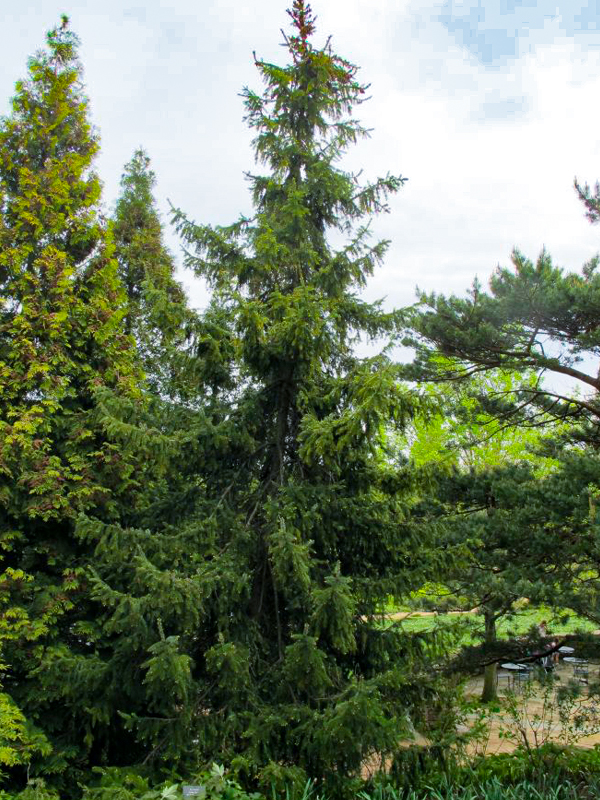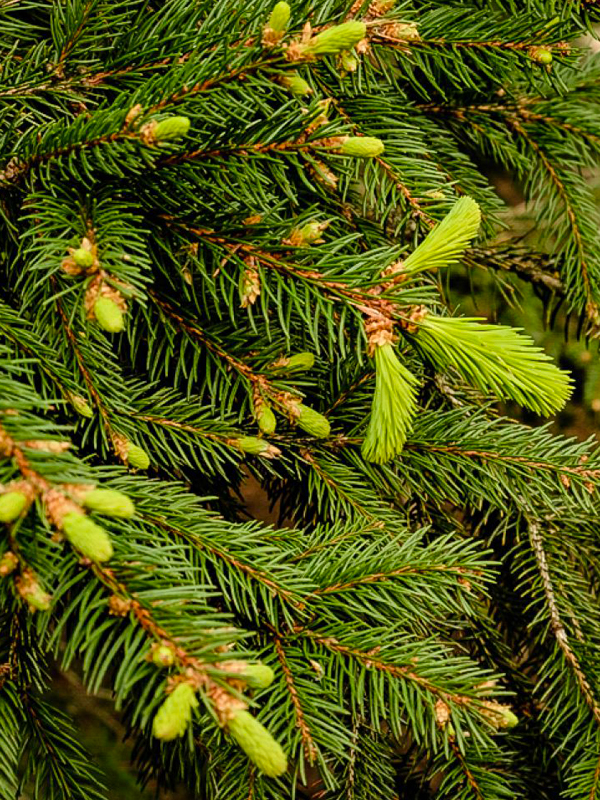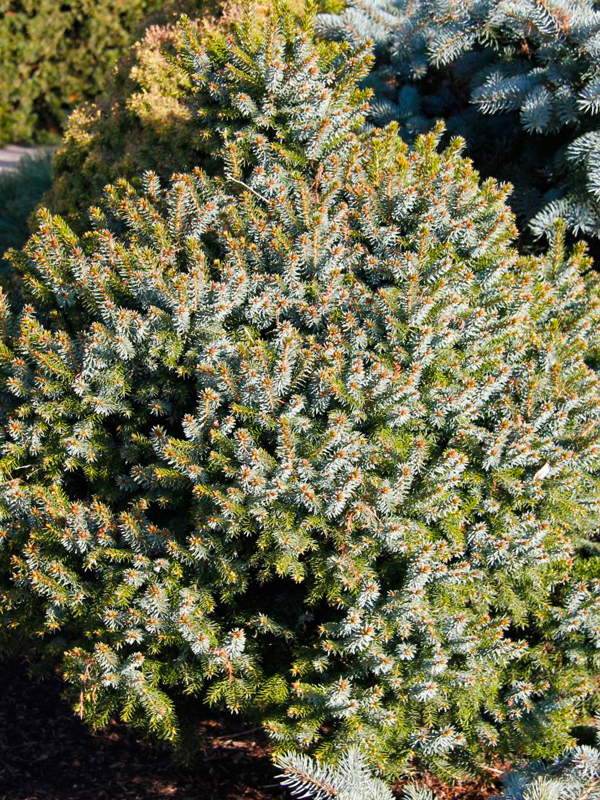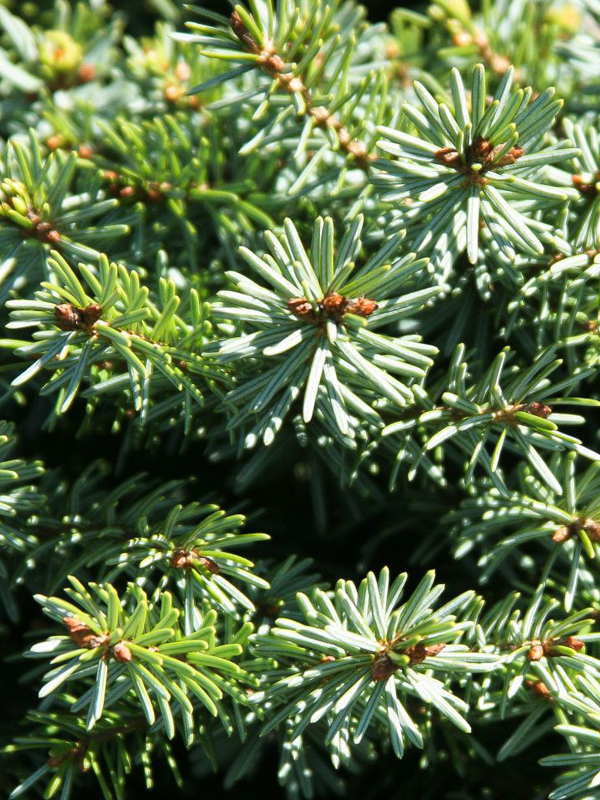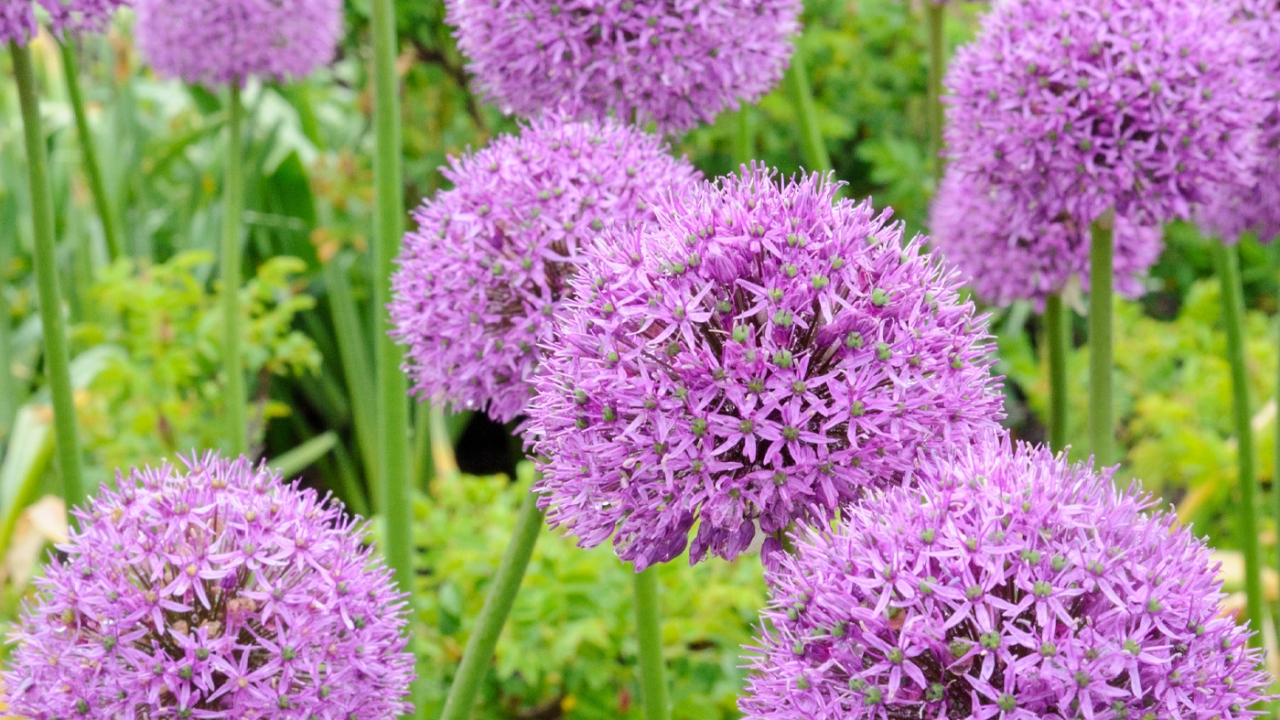

Plant Profiles
Serbian Spruce
Picea omorika
This is a versatile tree, able to stand alone as a specimen or to provide a year-round green screen of privacy when grouped with others. Individual trees mature at 40 to 60 feet but remain relatively narrow with their width less than half their height. The tree’s overall silhouette is one of uplifting beauty, and yet there is a definite weeping quality at the same time. A close examination of the branches reveals why.
Most branches begin their growth by gently curving downward before sweeping out and up. Smaller branchlets on each large branch hang down, which accounts for the tree’s pendulous appearance. However, the tips of many large, sweeping branches suddenly twist abruptly upward, reinforcing the uplifting impression.
This spruce has fragrant green needles with pale silver-blue undersides that create a two-toned effect when the branch tips turn up. As with most spruces, the plump oval cones are clustered at the top of the tree, where they dangle down in groups — purple when young, russet-brown when mature.
Serbian spruce is a statuesque conifer, strongly recommended for the Chicago area due to its four-season interest, including good winter color; disease and insect resistance; adaptability to heat, humidity and air pollution; and toughness along streets and parkways.


